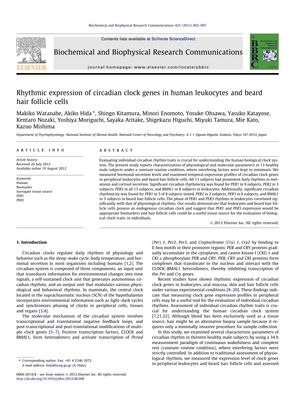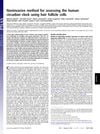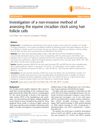Rhythmic Expression of Circadian Clock Genes in Human Leukocytes and Beard Hair Follicle Cells
August 2012
in “
Biochemical and biophysical research communications
”

TLDR Human leukocytes and beard hair follicle cells have internal daily clocks, and PER1 and PER3 genes may indicate individual circadian rhythms.
In a study from 2012 involving 13 healthy male subjects, researchers investigated circadian rhythm traits by measuring melatonin and cortisol levels and analyzing the expression of circadian clock genes in peripheral leukocytes and beard hair follicle cells under constant routine conditions. They found that all subjects exhibited daily rhythms in melatonin and cortisol secretion. In leukocytes, significant circadian rhythmicity was observed for PER1 in 9 subjects, PER2 in 3 subjects, PER3 in all subjects, and BMAL1 in 8 subjects. In beard hair follicle cells, rhythmicity was found for PER1 in 5 of 8 subjects, PER2 in 2 subjects, PER3 in 6 subjects, and BMAL1 in 3 subjects. There was a significant correlation between the phase of PER1 and PER3 rhythms in leukocytes and physiological rhythms. The study concluded that both leukocytes and beard hair follicle cells have an endogenous circadian clock, and that PER1 and PER3 gene expression could serve as biomarkers for assessing individual biological clock traits.

